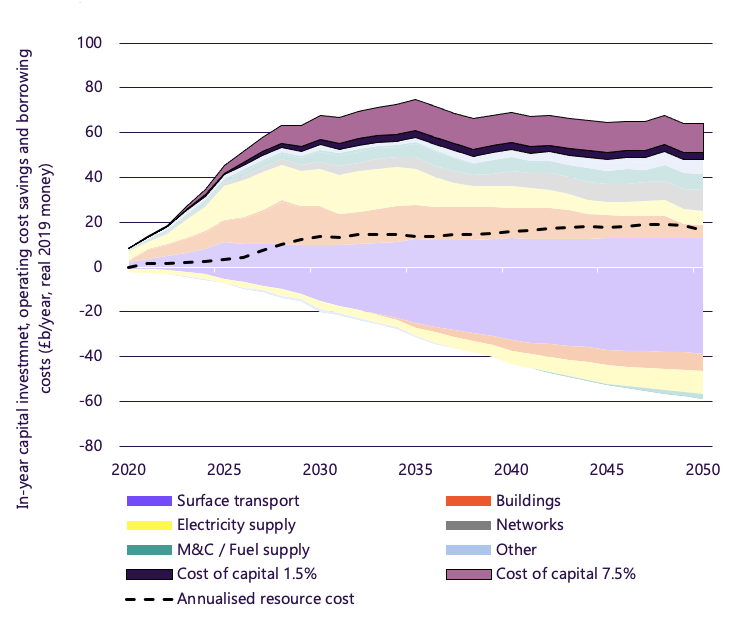The net-zero target needs to become core to the purpose of the financial system to deliver an investment-led green recovery, writes Nick Robins
Getting to net-zero greenhouse gas emissions is increasingly recognised as an important goal by leaders within the UK’s financial community. Strikingly, COVID-19 has deepened rather than deflected financial sector commitment to climate action. The UK government’s green recovery strategy remains a work in progress, but became progressively more ambitious through 2020. Importantly, delivering the UK’s 2050 net-zero target is no longer viewed as a necessity to be endured but rather as a driver of growth, innovation and job creation.
Making this happen will require unprecedented levels of private and public finance, delivered in ways that genuinely respond to the bottom-up needs of businesses and communities across the country. Major banks and investors are all pledging to make their portfolios net-zero by 2050. But translating this into real investment in buildings, industry, transport and nature remains a critical challenge.
To help identify how the UK can mobilise the capital needed to deliver net-zero, I was asked by the Climate Change Committee to chair an advisory group on finance to feed into its recommendation to government for the UK’s 6th Carbon Budget. Our report, The Road to Net-Zero Finance, was published alongside the 6th Carbon Budget and its 15 recommendations incorporated into the CCC’s main report.
The net-zero economy of the future will be more capital-intensive, moving from a system reliant on resource throughput to an investment-led model of development. Crucially, this shift needs to take place this decade, with the CCC estimating that there needs to be a five-fold increase in extra net-zero investment from circa £10bn/year in 2020 to around £50bn in 2030, before peaking in 2035 (Figure 1).
Figure 1. Achieving net-zero: estimated additional investment and operating cost savings by year

Source: CCC 6th Carbon Budget analysis (2020). Notes: LULUCF is Land-Use, Land-Use Change and Forestry. M&C is manufacturing and construction.
These capital costs will be more than offset by major financial savings in operating costs (Figure 2). One of the striking analytical findings in the 6th Carbon Budget is that “the level of UK GDP would be around 2% higher than it would have been by 2035 as resources are redirected from fossil fuel imports to UK investment”.
Figure 2. Borrowing costs can make up a substantial proportion of the costs of meeting net-zero

Source: CCC analysis contained in The Road to Net-Zero Finance report. Notes: Costs of electricity are included in the energy supply sector, whereas costs of other low-carbon fuels such as hydrogen and bioenergy are included in the sectors that use these fuels. M&C is manufacturing and construction. Other category includes aviation, shipping, land-use, land-use change and forestry, agriculture, removals, waste and F-gases.
The depth of the UK’s capital markets along with its growing expertise in sustainable finance mean that this significant ramp-up in investment is eminently deliverable. But it will necessitate being resolutely focused on removing the obstacles that exist. Net-zero is still not embedded into routine financial decisions. Market, policy and institutional failures continue to undermine the predictable cash flows that are needed to attract capital at scale. Demand for net-zero finance remains mixed: growing in the energy sector, almost non-existent in housing. Development capital is insufficient to build the net-zero infrastructure pipeline. Local authorities lack the capacity and tools to channel finance for place-based priorities. In terms of practical delivery, financing net-zero also needs to be connected to wider issues of resilience and fairness, making sure that the just transition becomes a reality. And there is still a lack of decision-useful climate data, including the absence of timely information that tracks flows of net-zero financial flows across the economy.
Overcoming these obstacles means making net-zero an explicit goal for the UK’s financial system, and then cascading this down through private finance, financial regulation and public finance. As we move towards the COP26 climate summit, the UK could show real leadership by committing to become the world’s first net-zero financial system. This would be followed by introducing mandatory requirements for financial institutions to develop net-zero targets and plans, matching the current focus on managing climate risk. These targets will help to drive the necessary innovation in financial services that is needed to respond to the net-zero needs of households, businesses and the public sector. Sector by sector transition pathways will also need to integrate financing as a core element so that breakthrough strategies can be developed, as is starting to take place for green buildings.
Getting this financial shift underway needs to be led by the post-COVID recovery plans, using this as an opportunity to fast-track net-zero investment and make this core to the UK’s public finance framework. At the heart of this will be making net-zero part of the purpose of the UK’s existing public finance institutions (such as the British Business Bank) and getting the new National Infrastructure Bank (NIB) operational as soon as possible. The prize is to place net-zero at the heart of the NIB’s mandate, crowding in the private sector and working with local authorities to deliver investment on the ground. The NIB also has the potential to be an anchor investor in just transition initiatives across the country, playing the role that the European Investment Bank does in the EU.
To finance the post-COVID recovery strategy, a strategic programme of green sovereign bonds has immense potential, responding to rising investor demand. The chancellor’s announcement that the UK will issue its first sovereign green bond in 2021 will not only help to tackle climate change, but could also boost green jobs across the country. It can also serve to catalyse additional green bond issuance by business and public bodies, building on the promising start from the new Community Municipal Investments in West Berkshire and Warrington. The Bank of England can play its own part by becoming a net-zero central bank and aligning its finance facilities and liquidity provision with the UK’s climate goals – not least to respond to the COVID-19 downturn.
Net-zero finance is not just a national priority, but also a global imperative. Mark Carney has set out a comprehensive private finance agenda for the COP26 summit: net-zero is included as part of the ‘returns’ pillar of his four-part ‘reporting, risk management, returns and mobilisation’ mantra. This year, the UK is president of both COP26 and the G7 and as such has a major opportunity to channel capital behind a sustainable and inclusive recovery from COVID-19 (for example, through coordinated issuance of green sovereign bonds across the world). This change in financial mindset from one focused on climate risk to one also focused on net-zero delivery looks set to be a defining feature of 2021 – but also the rest of the decade.
♣♣♣
Notes:
- This blog post is based on the author’s report to the UK Climate Change Commission.
- The post expresses the views of its author(s), not the position of LSE Business Review or the London School of Economics.
- Featured image by Tyler Casey on Unsplash
- When you leave a comment, you’re agreeing to our Comment Policy





